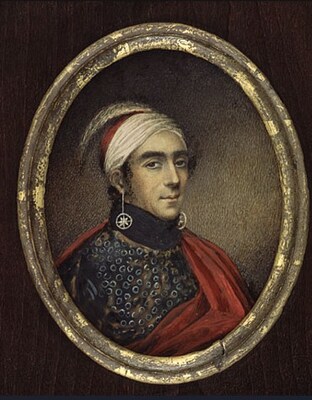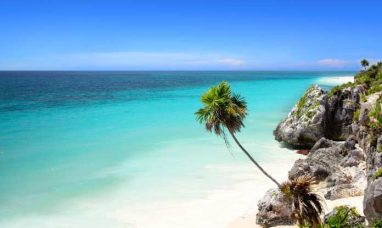NIAGARA-ON-THE-LAKE, ON, Nov. 2, 2024 /CNW/ – Today, Parks Canada commemorated the national historic significance of Teyoninhokarawen (John Norton) at a special plaque unveiling ceremony at Queenston Heights Park in Niagara-on-the-Lake, Ontario. The commemoration ceremony was held by Parks Canada in collaboration with Niagara Parks Commission during the annual Valour and Victory: Honouring Indigenous Veterans event at Queenston Heights Park.
Born on December 16, 1770, to a Scottish mother and an Ani-Yunwiya (Cherokee) father, Teyoninhokarawen (John Norton) was a great political and military leader, interpreter, and author before, during, and after the War of 1812. As an interpreter for the Indian Department at Niagara, Upper Canada, in the 1790s, Norton met and impressed the renowned Kanien’kehá:ka (Mohawk) chief Thayendanegea (Joseph Brant). Thayendanegea’s mentorship led Norton to join the Grand River Kanien’kehá:ka, where he was adopted as his nephew and successor. As an emissary, Norton journeyed to London, England, to convince the Privy Council to support Haudenosaunee land rights, in opposition to the Indian Department.
During the War of 1812, Norton’s leadership and military acumen was crucial, convincing many First Nations communities and their warriors to ally with the British in key battles, contributing to victories at the Battles of Queenston Heights, Stoney Creek, Chippawa and Lundy’s Lane. His success as a leader of Indigenous forces helped to counter American advances and solidify British positions.
Norton also left a rich literary legacy, including a translation of the Gospels of St. John and St. Matthew into Kanien’kéha (the Mohawk language) and journals which provide a rare record of the times and a Haudenosaunee perspective on the war. His work served as a bridge between cultures. As a leader, he played a crucial role in the military and diplomatic arenas in the late 18th and early 19th centuries.
The Government of Canada, through Parks Canada and the Historic Sites and Monuments Board of Canada, recognizes significant people, places, and events that shaped this country as one way of helping Canadians connect with their past. By sharing these stories with Canadians, we hope to foster understanding and reflection on the diverse histories, cultures, legacies, and realities of Canada’s past and present.
The designation process under Parks Canada’s National Program of Historical Commemoration is largely driven by public nominations. To nominate a person, place or historic event in your community, please visit the Parks Canada website for more information: https://www.pc.gc.ca/en/culture/clmhc-hsmbc/ncp-pcn/application.
Quote
“Today, on behalf of the Government of Canada, I am honoured to commemorate Teyoninhokarawen (John Norton) as a person of national historic significance. Teyoninhokarawen played a crucial role in leading Indigenous warriors alongside the British in the War of 1812. His background gave him unique perspective into Haudenosaunee life and struggles during the early 19th century, his accounts of which we are still learning from today. Historic designations like these, highlight the efforts of Indigenous peoples whose contributions and sacrifices played a key role in shaping Canada’s past, present and future.”
The Honourable Steven Guilbeault,
Minister of Environment and Climate Change and Minister responsible for Parks Canada
Quick Facts
- Teyoninhokarawen (John Norton) was designated a national historic person in 2011.
- John Norton was given the name Teyoninhokarawen (“It keeps the door open”) by chiefs of his Kanien’kehá:ka clan, a rank conferring him with the powers of emissary in diplomatic affairs and chieftain in war.
- The Historic Sites and Monuments Board of Canada plaque commemorating Teyoninhokarawen (John Norton) will be unveiled in Queenston, which is the traditional territory of First Nations including the Haudenosaunee and the Anishinaabeg. This territory is covered by the Upper Canada Treaties and is within the lands protected by the Dish with One Spoon Wampum agreement.
- Created in 1919, the Historic Sites and Monuments Board of Canada advises the Minister of Environment and Climate Change regarding the national significance of persons, places, and events that have marked Canada’s history. To date, more than 2,260 designations have been made nationwide.
- Together with Parks Canada, the Board ensures that subjects of national historic significance are recognized under Parks Canada’s National Program of Historical Commemoration and these important stories are shared with Canadians.
- Parks Canada is committed to working with Canadians in our efforts to tell broader, more inclusive stories in the places that it manages. In support of this goal, the Framework for History and Commemoration outlines a comprehensive, and engaging approach to sharing Canada’s history through diverse perspectives, including shedding light on tragic and difficult periods of Canada’s past.
Related Document
Backgrounder: Teyoninhokarawen (John Norton)
Related Links
Parks Canada
Historic Sites and Monuments Board of Canada
SOURCE Parks Canada (HQ)

Featured Image: Megapixl @ Acitore
















